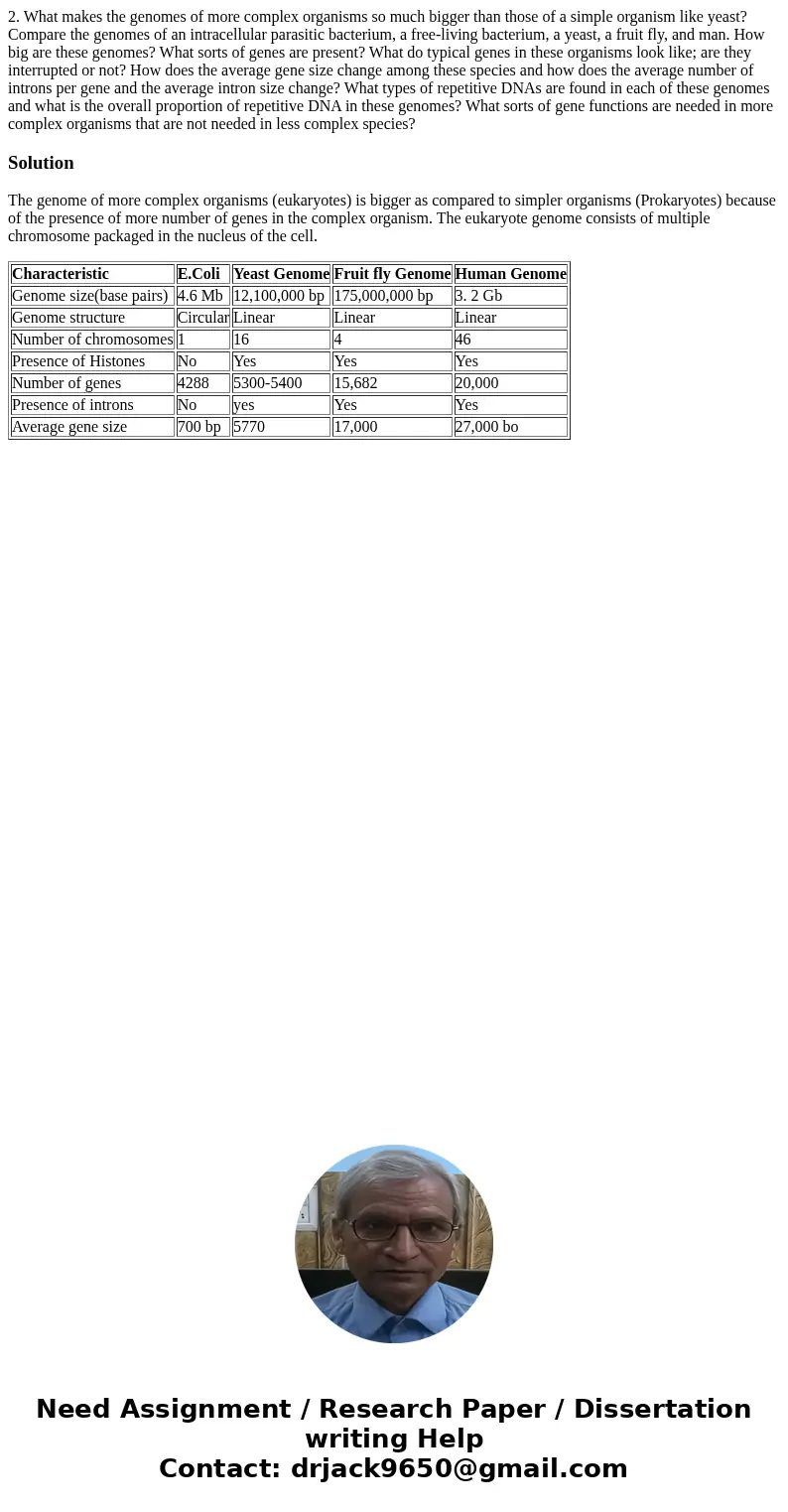2 What makes the genomes of more complex organisms so much b
2. What makes the genomes of more complex organisms so much bigger than those of a simple organism like yeast? Compare the genomes of an intracellular parasitic bacterium, a free-living bacterium, a yeast, a fruit fly, and man. How big are these genomes? What sorts of genes are present? What do typical genes in these organisms look like; are they interrupted or not? How does the average gene size change among these species and how does the average number of introns per gene and the average intron size change? What types of repetitive DNAs are found in each of these genomes and what is the overall proportion of repetitive DNA in these genomes? What sorts of gene functions are needed in more complex organisms that are not needed in less complex species?
Solution
The genome of more complex organisms (eukaryotes) is bigger as compared to simpler organisms (Prokaryotes) because of the presence of more number of genes in the complex organism. The eukaryote genome consists of multiple chromosome packaged in the nucleus of the cell.
| Characteristic | E.Coli | Yeast Genome | Fruit fly Genome | Human Genome |
| Genome size(base pairs) | 4.6 Mb | 12,100,000 bp | 175,000,000 bp | 3. 2 Gb |
| Genome structure | Circular | Linear | Linear | Linear |
| Number of chromosomes | 1 | 16 | 4 | 46 |
| Presence of Histones | No | Yes | Yes | Yes |
| Number of genes | 4288 | 5300-5400 | 15,682 | 20,000 |
| Presence of introns | No | yes | Yes | Yes |
| Average gene size | 700 bp | 5770 | 17,000 | 27,000 bo |

 Homework Sourse
Homework Sourse